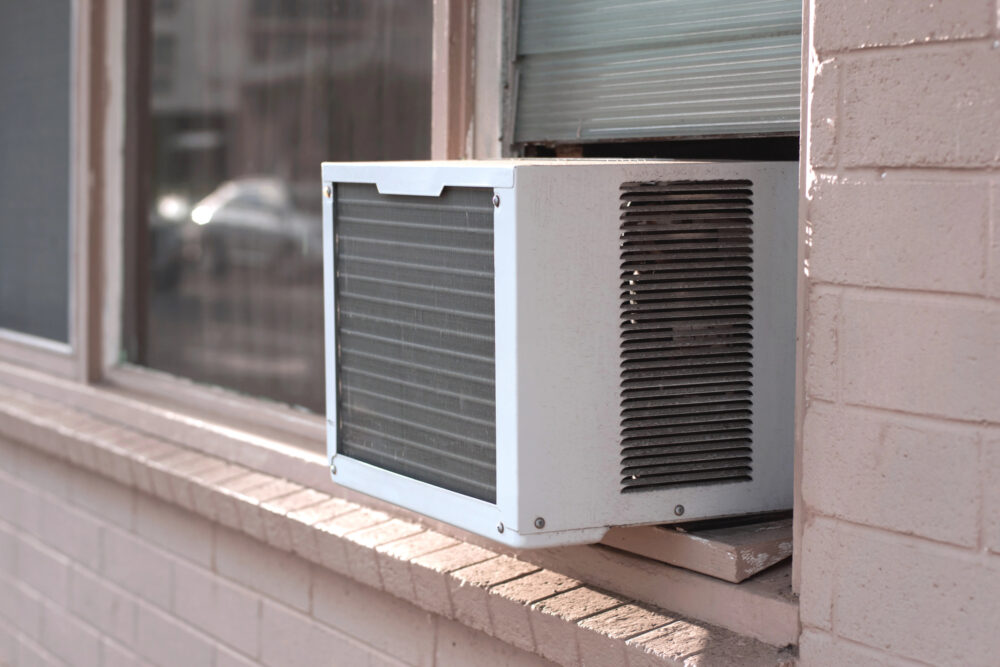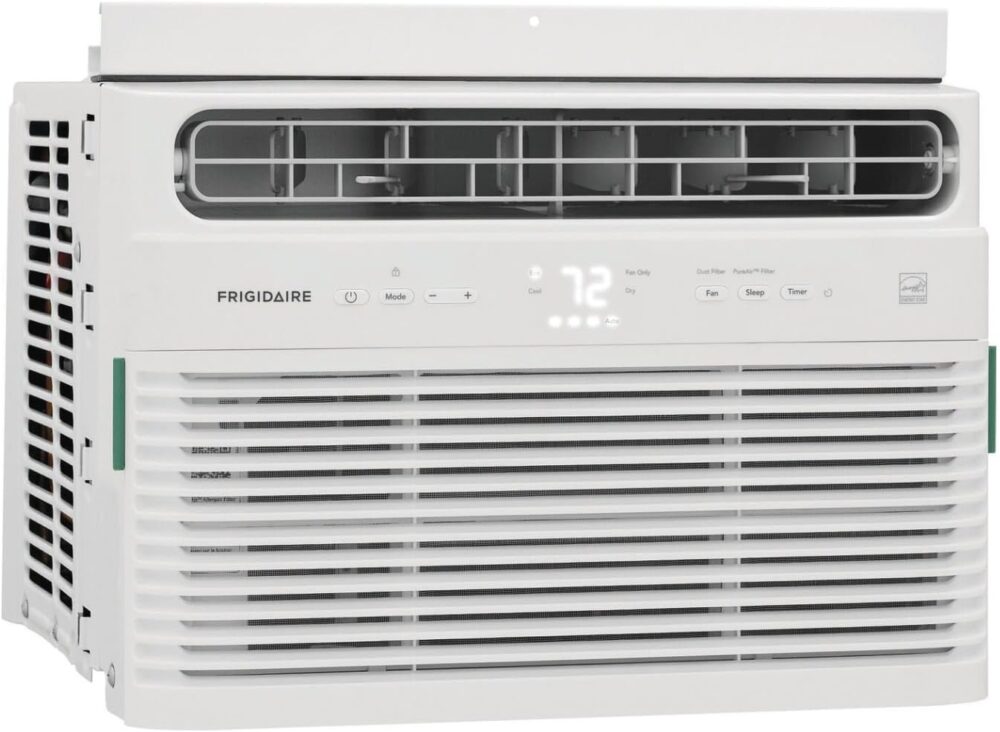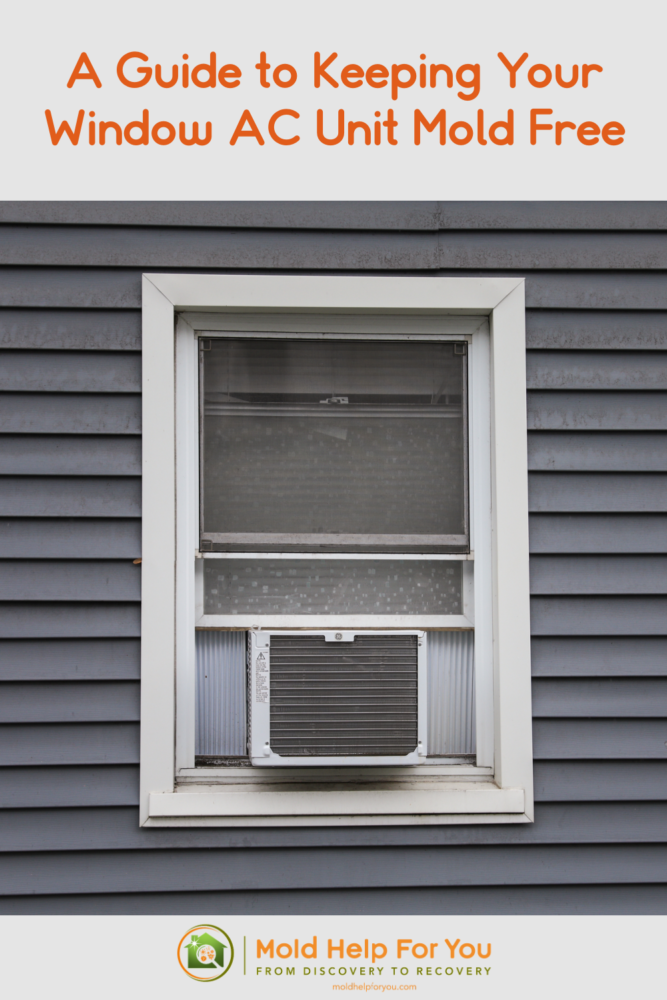A Guide to Keeping Your Window AC Unit Mold Free
This post may contain affiliate links. Read our full disclosure.
An Introduction to Mold and Your Window AC
Mold in air conditioner units, specifically window AC units, can severely impact air quality and health. Individuals with mold allergies, illness or sensitivities may face heightened risks, making it critical to address mold growth promptly. Dust accumulation, AC leaks, and dirty filters often lead to mold in window AC units, compromising the air we breathe. This concern escalates when the smell of mold coincides with the onset of warmer weather, signaling mold presence even before it becomes visible.
In this guide, I will explore how to prevent mold, ensuring the safe and effective cleaning of the window air conditioner parts. We’ll delve into when it’s advisable to clean your window AC unit and when a replacement becomes inevitable. I aim to shed light on the importance of window AC unit maintenance to improve air quality and mitigate health risks. From identifying mold growth to selecting between professional cleaning or DIY mold removal, this article covers essential strategies to fight mold in window air conditioners. Let’s embark on a journey to ensure your window AC unit remains fresh, providing not just cool but clean air.
Identifying Mold in Your Window AC Unit
You pull the cover off your window AC unit, ready to welcome the cooling breeze of summer. Instead, a distinct smell assaults your senses, a clear indicator that mold has taken up residence in your window air conditioner. This mold smell serves as the first non-visible sign of mold lurking in parts of the unit you can’t see. At times, you may spot black or greenish spots on the filter or within the vents. These visible mold spores confirm your suspicions and signal the need for immediate action.
Mold in window air conditioners isn’t just an inconvenience; it poses serious health risks. Consequently, when dust accumulation, AC leaks, or dirty filters provide the perfect breeding ground for mold, your air quality suffers. Each breath you take could be compromising your health and well-being.
Thus, identifying mold growth in your window AC unit becomes a crucial first step in safeguarding your indoor air quality. Whether it’s the detection of a musty smell or the sight of mold spores, these signs should prompt you to take immediate action. Ignoring them not only threatens your comfort but, more importantly, your health and that of your loved ones.
Why Mold Grows in Window AC Units
Mold thrives in environments that few of us would consider ideal. When I was in college, I discovered that my window AC unit had become a breeding ground for these unwelcome guests. Humidity had conspired with dust, creating a perfect haven for mold. It wasn’t the machine itself that invited mold but the conditions around it. Dust accumulation, a seemingly harmless issue, turned out to be the primary food source for the mold in my window. Each particle, tiny as it might be, contributed to a larger problem.
Any window AC maintenance guide will emphasize the relationship between high humidity levels and mold growth. Window AC units often face the brunt of external air’s moisture, especially during sweltering summers. This moisture, when combined with stagnant water from AC leaks or uncleaned filters, fosters an environment mold cannot resist. Dirty filters halt the airflow, trapping moisture and dust together inside.
Keeping air quality at its peak meant addressing these inherent issues. Preventing mold in window air conditioners is not about combating the mold directly but altering the environment it thrives in.

Steps to Remove Mold from Your Window AC
Removing mold from your window AC unit is essential for maintaining air quality and preventing health risks. I do not typically advocate for DIY mold removal, especially if you are have mold related health issues. However, if you are intent on saving your window AC unit yourself, these are the steps to take:
- Gather necessary items: Before starting, ensure you have gloves, a mask, a screwdriver, a spray bottle filled with Remedy Mold Treatment Solution or Superstratum Pro, a small vacuum with a brush attachment, and disposable microfiber cloths.
- Power off the unit: Safety comes first. Make sure your window AC is unplugged before beginning any work on it.
- Disassemble and inspect: Carefully remove the front panel and any other easily detachable parts to check for visible mold on the air conditioner parts. Dust accumulation is often a culprit in these hidden spots.
- Replace filters: If the filters are dirty, I advocate for replacing them as opposed to trying to clean them. Clean filters are crucial for preventing mold regrowth.
- Address mold spots: Using the spray bottle, apply the Remedy or Superstratum to any moldy areas. Let it sit for a few minutes, then gently scrub away the mold using a cloth or brush.
- Vacuum and dry: Vacuum any loosened mold spores and debris. Thoroughly dry all cleaned areas and parts before reassembling the window air conditioner. Allow the unit to dry for 24 hours in moderate temperatures, longer if it is cooler weather.
DIY mold removal from a window AC unit can improve your home’s air quality and save you the cost of hiring an HVAC professional or purchasing a new air conditioner. However, for severe cases, seeking professional help is advised. Regular window AC unit maintenance can prevent future mold growth, ensuring a fresher, healthier environment.
When to Hire a Professional
When should professional intervention be sought in the battle against mold within window AC units? Certain conditions heavily suggest the need for expert involvement. Recognizing these signs is crucial in safeguarding both air quality and health from the adverse effects of mold.
Mold that covers a significant portion of the window AC, specifically one-third or more, signals a severe infestation. In situations like this, the chances are slim for completely eradicating mold through cleaning. The safe and cost-effective decision often leans towards replacement rather than restoration. Professionals can guide you through this process, ensuring that you choose an appropriate new model and properly dispose of the mold-infested unit, thereby preventing any spread of mold spores to other areas of your home. A lot of people do NOT choose the right window AC unit for their climate or space. Don’t hesitate to get professional advice on what will work best for your situation.
I will share the Frigidaire has always had a good reputation for window AC units and their ratings hover very close to 5 stars consistently. I have used their 6,000 BTU unit and it was very easy to maintain and worked like a dream consistently.

Choosing Between Cleaning and Replacing
Deciding between cleaning your window AC unit and purchasing a new one presents a predicament concerning both air quality and financial implications. You have noticed the musty smell and the unwelcome air conditioner odor that signals mold growth. At this juncture, the health risks associated with mold allergies necessitate a careful assessment.
The presence of mold in window AC units, often times means replacement. Like I stated earlier, if the mold covers one-third or more of the unit, I find it imperative to advocate for replacement. When I see this during an inspection, I cannot guarantee the complete eradication of mold spores, even after a rigorous cleaning process. The safety and air quality in your home remain my top priorities in this case.
Moreover, the costs associated with professional services for mold removal in a window AC unit must be taken into account. When these costs approach or surpass the price of a new window air conditioner, choosing a replacement becomes a no-brainer. Furthermore, the latest window AC models offer enhanced energy efficiency and better air filtering capabilities, contributing to improved air quality and potentially lower electricity bills over time. It’s important to consider these long-term benefits alongside the immediate need to address mold growth.
In essence, replacing a mold-infested window AC unit often emerges as the safer and more cost-effective route. It not only ensures a healthier living environment by eliminating mold illness risks but also sets the stage for more efficient window AC maintenance practices moving forward.
Preventive Measures to Avoid Mold in a Window AC Unit
To keep your window AC unit free from mold, a few preventive measures can make all the difference.
- Regularly Clean or Replace Filters: Dust accumulation is a leading cause of mold growth in air conditioners. By cleaning or replacing the air filters regularly, you reduce dust and prevent mold from taking root.
- Inspect for AC Leaks Frequently: Leaks in your window AC unit can create a damp environment conducive to mold. Inspect your unit often, and if you find leaks, address them promptly to keep the area dry and mold-free.
- Ensure Proper Installation: An improperly installed window AC can allow moisture to accumulate, encouraging mold growth. Make sure your unit is correctly installed and that it drains properly to avoid any water buildup.
- Schedule Routine Maintenance: Professional maintenance identifies potential issues before they lead to mold growth. An window AC professional can ensure that your window AC unit and any central air system components are functioning optimally, helping to prevent mold and improve air quality.
- Use a Mold Inhibitor: Incorporating a mold inhibitor into your cleaning routine can help prevent mold spores from developing. I strongly recommend Superstratum Smart Polymer Coating.
Taking these steps helps ensure that the air you breathe is clean and that your window AC unit remains mold-free. Acting proactively not only enhances the air quality but also extends the life of your air conditioner, possibly preventing the need for an air conditioner replacement.
Summer Preparedness: Checking Your Unit
As the warming sun announces the arrival of summer, many of people retrieve their window AC units from storage, eager for relief from the heat. This is a critical moment to prevent mold and ensure air quality. Dust accumulation and AC leaks during inactive months can create a haven for mold spores, compromising the health of your home’s air.
First, examine your window air conditioner thoroughly. Look for signs of mold growth or musty smells indicating the presence of mold in the air conditioner. If you detect any signs of mold, consider whether a mold removal or a replacement unit is needed. Checking these elements before summer heat hits can save you from a major mold issue in your window AC.
In this post I refer to CitriSafe Remedy products. They are one of the only two mold and mycotoxin removal products that I personally use and recommend. Please read my article outlining what makes Remedy superior when it comes to killing mold and mycotoxins. It has been proven to be 99% effective when used properly. I encourage you to purchase CitriSafe products directly through CitriSafe. If you prefer to shop on Amazon, CitriSafe has a presence there as well.
In this post I refer to Superstratum products. They are one of the only two mold and mycotoxins removal products that I personally use and recommend. Please read my article out the Superstratum product line for more information how how they work and the products available. This product lines has never failed me and is great for chemically sensitive individuals. I encourage you to purchase Superstratum products directly through the company website.

